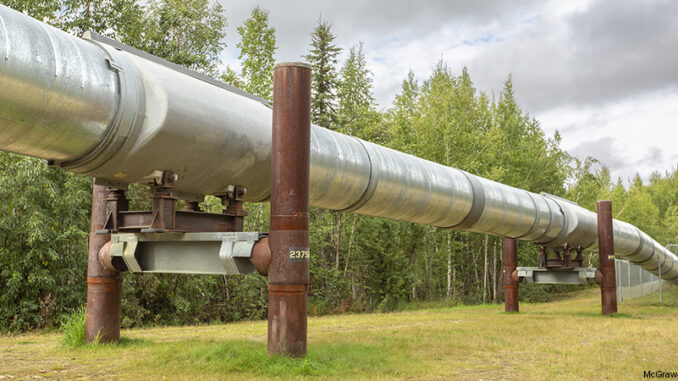
Democrats Win Runoffs and Take Control of Senate
Last week, while the nation focused on the events unfolding at the Capitol Building in Washington, D.C., a quieter battle was taking place: the race for Georgia’s Senate seats. These twin runoff Senate races had been the focus of nationwide speculation and campaigning ever since November.

So what made these particular races so important? Going into last November’s election, Republicans had firmly controlled the Senate. But Democrats picked up several key Senate seats leaving the Senate membership at 50 Republicans and 48 Democrats. If even one of Georgia’s two Republican incumbents held onto his or her seat in the runoff, then Republicans would maintain control of the Senate. But if Democrats were able to win both runoffs, then the Senate would be tied, 50-50. And according to the Constitution, ties in the Senate are broken by the vice president. This means when President Biden takes office, his Vice President Kamala Harris will be able to cast the deciding vote. This will give Democrats control of the Senate.
Despite Joe Biden’s victory in November, Georgia’s recent history is strongly Republican. Georgia’s voters haven’t elected a Democratic senator since the 1970s. However, last week, that changed. Both races were extremely close. But Democrat Rev. Raphael Warnock won with 51 percent of the vote to Republican incumbent Kelly Loeffler’s 49 percent. Hours later, Democrat Jon Ossoff won with 50.6 percent of the vote to Republican incumbent David Perdue’s 49.4 percent. This means that the White House and both houses of Congress will be controlled by the Democratic Party.
Dig Deeper Rev. Raphael Warnock’s win was important for another reason as well. Rev. Warnock is the first African American senator to represent the state of Georgia. In total, how many U.S. senators have been African American?
Oil Drilling in New Parts of Alaskan Wilderness
The Arctic National Wildlife Refuge (ANWR) in Alaska stretches over 19 million acres and is often considered to be the last great American wilderness. It is home to wolves and to hundreds of thousands of caribou. Pregnant polar bears build their dens here, now that climate change has caused sea ice to become too thin to hold them. It is a critical ecosystem. Now, however, its future may be threatened.
With just days remaining before a new president is inaugurated, the Trump administration has proposed new oil lease sales in new portions of the refuge. Under this plan, about 5 percent of the land–roughly one million acres–will be opened up to drilling. Why? Just west of the refuge is Prudhoe Bay, the largest oil field in North America. Alaskan political leaders believe that the ANWR may hold similar oil reserves. Oil is vitally important to the Alaskan economy, and experts guess that there may be as much as 11 billion barrels of oil lying underneath the refuge. The decision is opposed, however, by environmental and indigenous groups who have fought to protect the land for decades. Recently, they took the Trump administration to court to try to stop the sale, but the attempt failed.
Nevertheless, these groups say that they will continue to fight back to protect the refuge. Working in their favor is the fact that very few companies have expressed any interest in drilling in the area. No roads or infrastructure exist currently, making it very expensive to drill there. Besides that, many U.S. banks are refusing to help fund any expeditions there. The incoming Biden administration has committed to addressing climate change, meaning that drilling in the ANWR may be delayed.
What Do You Think? Imagine that you are a politician in Alaska. Alaskans receive a direct check from their government every year as their share of the state’s oil revenues. In your opinion, what is more important: putting money into the hands of Alaskan families, or protecting the critical ecosystem of the ANWR? Explain, remembering as always to be respectful with your answer.
North Korean Leader Admits Failure
Last week, a meeting of North Korea’s ruling party (the Workers’ Party) went differently than expected. That’s because North Korean leader Kim Jong Un addressed the large auditorium and admitted that many of his policies had failed. He went on to say that leaders should be brave enough to recognize and acknowledge their mistakes, so that these failures can be addressed and the country can move forward in a better direction.
Kim Jong Un’s admission comes at a time when North Korea is facing its biggest economic downfall in decades. This is due to several factors, such as international economic sanctions, several natural disasters in the past few years, and the economic fallout from COVID-19. The virus shut down the already limited trade in North Korea, causing food prices within the country to rise drastically. During the nation’s last significant economic crisis, which occurred in the mid-1990s, more than a million people died of starvation.
The North Korean leader did also did not suggest new governing policies to address these issues. President-elect Joe Biden has indicated that he plans to move away from the Trump administration’s attempts to build relationships with North Korea, focusing instead on improving diplomatic ties with South Korea. Experts believe that any economic help for North Korea will most likely come from China.
What Do You Think? Why do you think it is unusual that Kim Jong Un recognized that he made mistakes?
Dwarf Giraffes
You wouldn’t generally think of something nine feet tall as being dwarf-sized. But when it comes to giraffes that is the case. Giraffes usually measure around sixteen feet tall. So, when people discovered a nine-feet, four-inch tall giraffe in Uganda in 2015 it was a surprise. It was even more surprising when, just three years later, a second short giraffe was found in Namibia: this one only 8.5 feet tall. Scientists named the Uganda giraffe “Gimli,” and the Namibian giraffe “Nigel.” The scientists found that both mature, male giraffes had similar proportions. Their necks were about as long as those of other adult male giraffes, but their legs were far shorter, closer to a horse’s leg length. After analyzing their measurements, scientists determined that both animals had skeletal dysplasia, also known as dwarfism. While dwarfism has been found in humans and domestic animals, it’s rare in wild animals, and before Gimli and Nigel, had never been seen in giraffes.
How does this condition affect the giraffes? It presents some challenges. For example, it is likely more difficult to escape from predators, since shorter legs mean a hindered ability to kick or run away quickly. It would also be nearly impossible for these animals to mate with a normal-sized female giraffe. But the fact that both Gimli and Nigel have lived until adulthood–which only half of wild giraffes are able to do–shows that it has been possible for them to adapt and thrive, despite their short stature.
